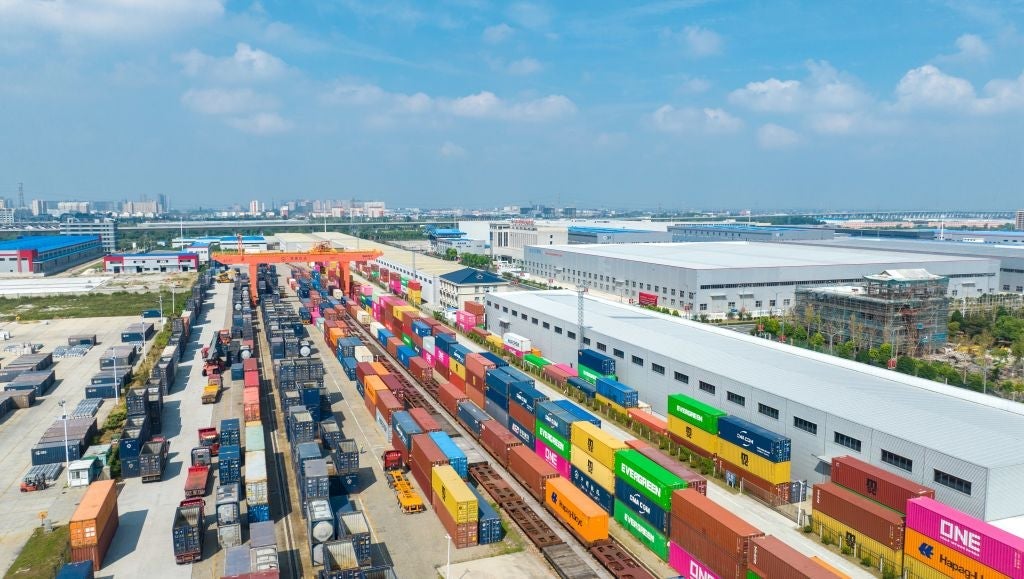
The era of the easy, frictionless supply chain is over. Up until 2020, supply chains were incredibly resilient and efficient. Everything was delivered seamlessly, on time and at a low cost – to the benefit of companies and consumers. As such, few people were focused on them. According to GlobalData’s Social Media Analytics, supply chains were mentioned on Reddit and Twitter only 1,908 times in 2019.
However, supply chain vulnerabilities have been exposed by several recent events including Covid-19, the semiconductor shortage, and the Ukraine war. In 2021, social media mentions of supply chains reached 25,636, a thirteen-fold increase from 2019. The world order that enabled globalisation and those resilient, efficient supply chains is splintering. A new order of de-globalisation will replace it.
There are no quick fixes, and reworking the supply chain model will be painful. Many corporate leaders view the risks and costs of reconfiguring their supply chains as greater than leaving them as they are. Many believe that reconfiguring supply chains could seriously damage the global economy. According to the World Trade Organization, decoupling into Western and Eastern blocs would cause the global economy to lose almost 5% of output, equivalent to more than $4trn. Re-engineering supply chains is an enormous task, and corporate budgets will be squeezed as the global economy moves into a possible recession. However, it must be done.
The sheer complexity of supply chains means that there is a long way to go in utilising technologies to reconfigure supply chains and deliver new efficiencies through analytics and automation. No single solution will be available in the short term.
By 2035, supply chains will be fully digitised and automated; they will consist of cloud-based logistics services, machine learning, factory robotics, and autonomous portside, warehouse and delivery vehicles. More local operations will be scaled up through 3D and 4D organic and non-organic printing, reducing the need for long-distance logistics.
The only way to address supply chain challenges will be to focus on digitalisation and automation, especially to assist in reshoring without significantly impacting margins and prices. Companies should focus on a convergence of technologies to remodel supply chains to be lean and self-sufficient – but how?
How well do you really know your competitors?
Access the most comprehensive Company Profiles on the market, powered by GlobalData. Save hours of research. Gain competitive edge.

Thank you!
Your download email will arrive shortly
Not ready to buy yet? Download a free sample
We are confident about the unique quality of our Company Profiles. However, we want you to make the most beneficial decision for your business, so we offer a free sample that you can download by submitting the below form
By GlobalDataWhat are the solutions to supply chain risks?
Advanced data analytics will drive visibility and enhance resilience
Modern supply chains have access to a tremendous amount of data. This can help anticipate shortages, adjust prices and distribute products to where they are needed. Despite the obvious benefits of harnessing this data, many supply chains still lag in digitalising their data collection and use. Companies then lose critical insights into their supply chain health and performance. Below are the key technologies that supply chain managers should focus on to get the best out of the available data.
Alternative energy sources will bolster local manufacturing and production
Local alternative energy sources will reduce reliance on external countries for power. The logistics sector is also a large producer of carbon emissions. Alternative fuels, mainly hydrogen, will ensure companies can comply with environmental, social and governance (ESG) regulations while also addressing concerns around energy security.
Digital twins will identify supply chain risks early and model solutions
Digital twins are digital representations of physical assets, systems or processes. They help to detect, prevent, predict and optimise the physical environment using AI, real-time analytics, visualisation and simulation tools. Supply chain managers can use digital twins to stay ahead of disruptions and monitor all aspects of the value chain in real time. Digital twins are hungry for data and can virtually represent any aspect of a supply chain.
Factory floor digitalisation will increase efficiency, safety and productivity
Making manufacturing more digital can increase productivity, lower costs and improve safety. The easiest way of digitalising is starting with a single business process such as warehousing or front-end planning. Increased automation across all stages of the supply chain will improve resilience and reduce the risk of disruptions.
Reshoring, nearshoring and friendshoring have varying levels of utility
The growing importance of ESG issues means companies will have to balance ESG impacts with labour costs. Nearshoring and reshoring will become more viable strategies as other technologies develop. Friendshoring within and between Western countries will be largely avoided in the short term as it will likely increase business costs dramatically.
Recycling and the circular economy will create more sustainable supply chains
The long-term sustainability of the planet depends on the careful management of natural resources. The recycling of key raw materials will require a massive transformation of the way current supply chains are structured. This will also reduce dependence on scarce resources, often located in geopolitically high-risk countries and regions.
Social media will make or break the reputation of a company’s supply chain
According to the Global Digital Report 2021, approximately 4.2 billion people use social media, more than half of the world’s population. The number of worldwide social media users is expected to grow to approximately 4.4 billion by 2025. The rise of social media means negative experiences from supply chain disruptions can reach large audiences quickly, damaging a company’s reputation and impacting its future profitability.
The most successful social media companies have built large ecosystems of complementary products and services and thus have access to large troves of data. Companies can use this data in several ways to manage their own supply chains.
Synthetics will enable cost-effective reshoring and reduce reliance on imports
Synthetic alternatives to meat, precious metals, natural fibres, fuel and medicines, among others, continue to develop. The environmental benefits of such innovations are often the focus, but these developments also facilitate the next stage of supply chain management. The synthetic revolution is under way and will enable lean supply chain management, a decreased reliance on imports and support for reshoring efforts.
A fast-growing example of synthetic biology alternatives is meat substitutes. According to GlobalData’s data, the value of the industry reached $6.9bn in 2021, up from $4bn in 2015.
The long and short of supply chains
It is clear what must be done to secure supply chains and make them more sustainable: bring them home. The global order that enabled and sustained them from 2000 to 2019 is collapsing, and geopolitical tensions are rising.
This imperative is driving the emergence of lavishly funded policies to enable the reshoring of leading-edge semiconductors in the US and Europe instead of offshoring them to north-east Asia.
This theme goes way beyond semiconductors and issues of national security, however.
By the end of the decade, just as chips, the most complex products ever created, are essentially printed at scale, it will also become increasingly possible to print almost anything at scale where it is needed.
This is the direction of travel for supply chains as the fourth industrial revolution, the real battleground between the US and China, unfolds.
Although all regions are expected to grow economically in 2022, it will be at a lower rate than in 2021. The war in Ukraine has increased pressure on global supply chains and worsened inflation. Signs of a global recession are also emerging. Streamlining and innovating supply chains now will protect companies from the worst of what is to come.
To access the full report, please visit here.







